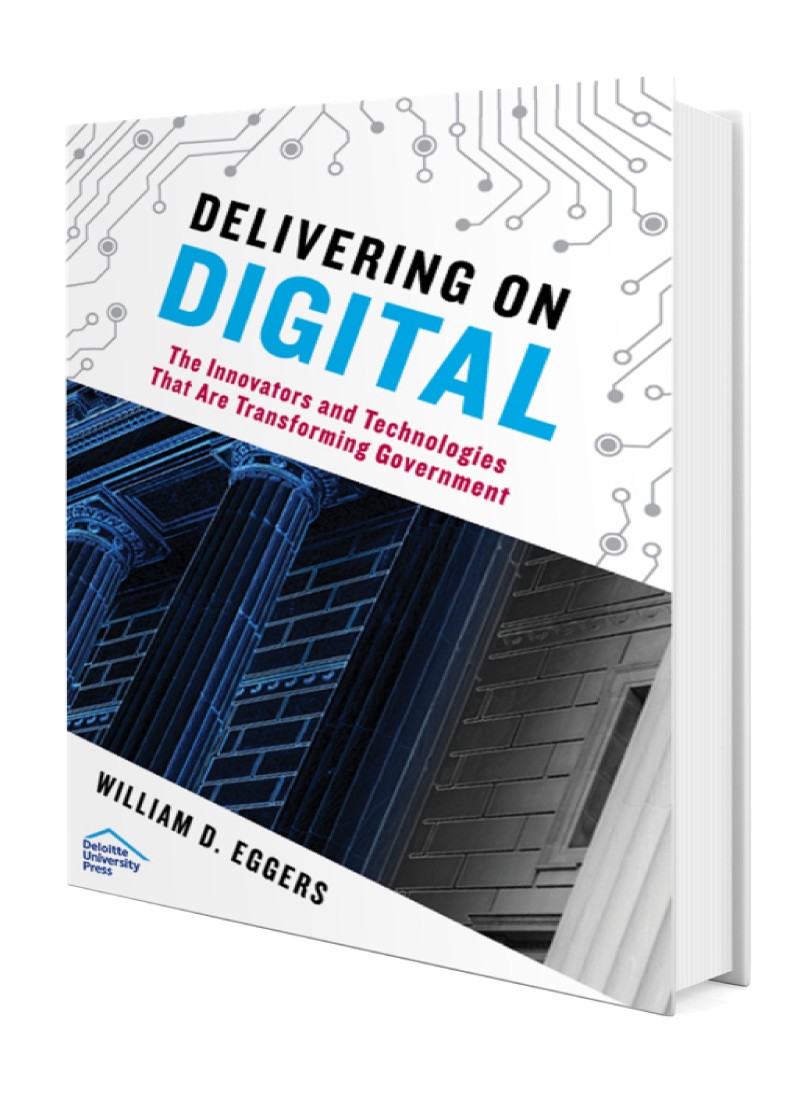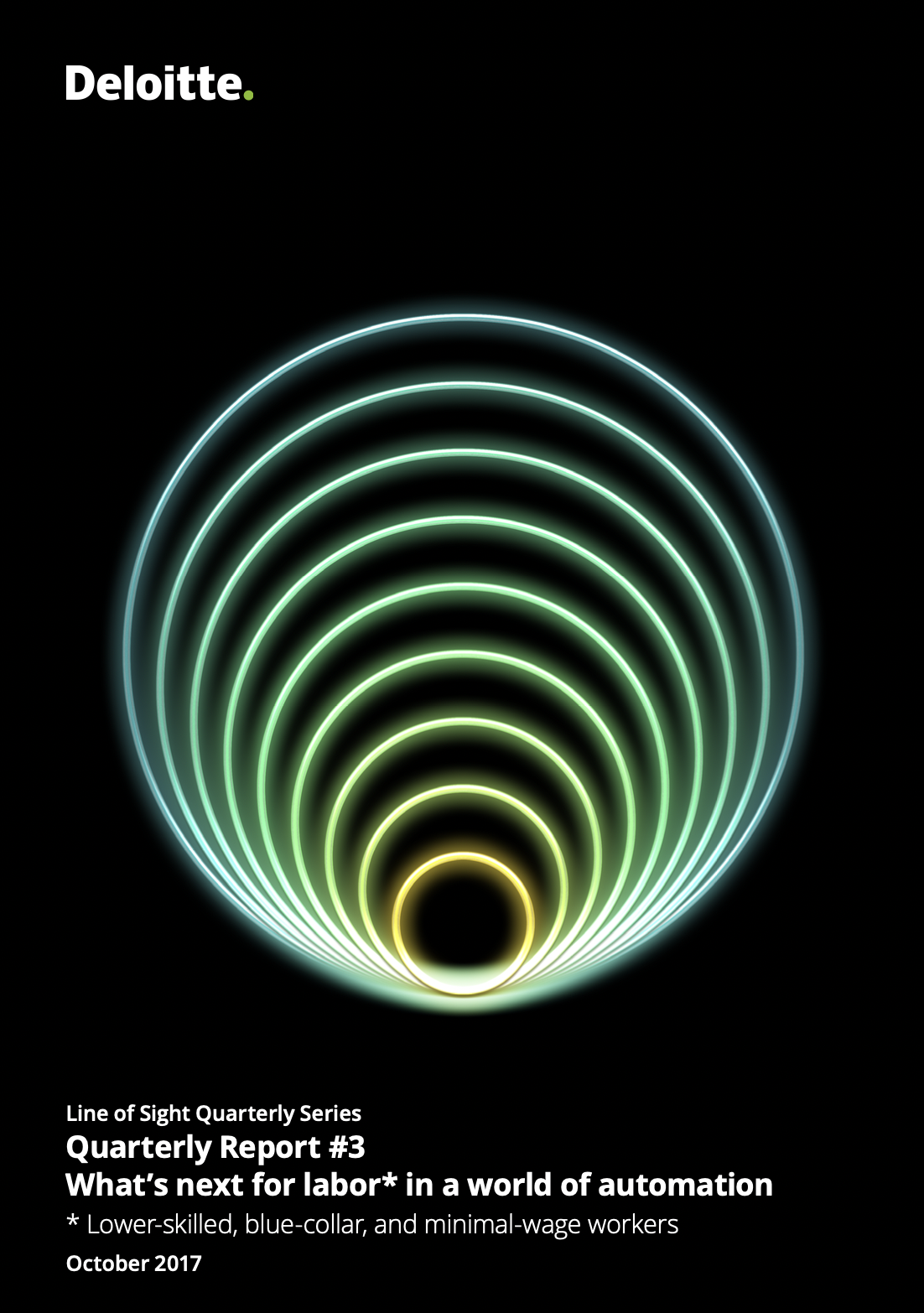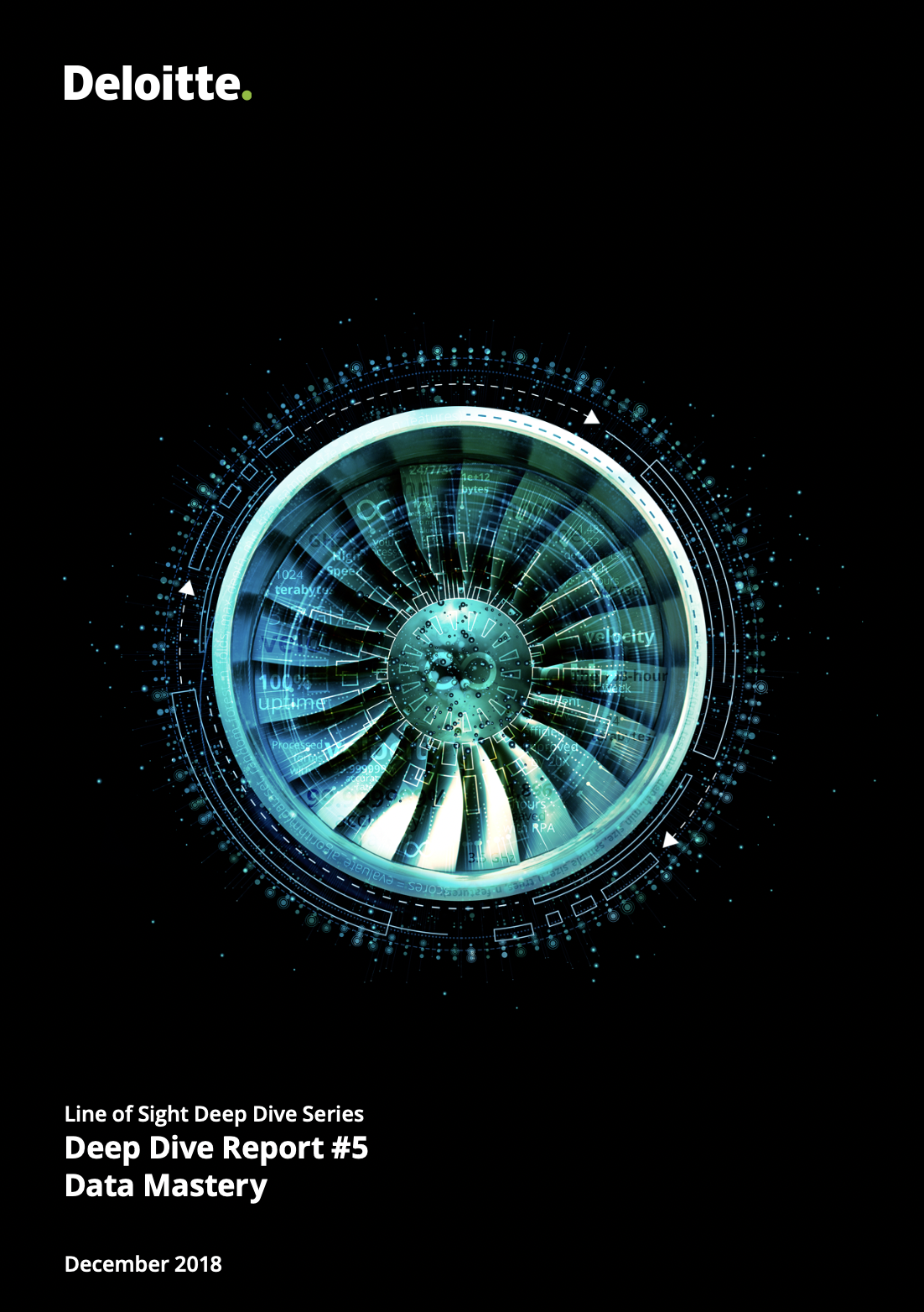WRITING, EDITING,
AND CONSULTING
“Dan gets the job done. His high EQ is a terrific amplifier of his brilliant thinking. He is able to comprehend and communicate new ideas, as well as push past them with his wealth of life experience to develop new insights that contribute high value to the project, and to other team members.”
- Chris Heuer, Founder, AdHocium
In addition to music, I also work as a freelance writer, editor, and consultant. My work has been published by Rosetta Books, in popular journals such as Deloitte Review, and has been cited by columnist Thomas Friedman in the New York Times.
I bring over 15 years of experience, including as a strategy consultant at Deloitte, where I advised clients on technology and innovation. In that time, I’ve covered all aspects of producing short to long-form copy, including storyboarding; conducting primary and secondary research, including hundreds of SME interviews; writing, editing, art direction, and layout, for pieces ranging from 200 words to 200 pages.
My clients typically hire me to get the best of both worlds: someone who can write compelling copy, but who also understands the organization, and can contribute at a strategic level.
Past clients include:


Contact ︎︎
Selected Excerpts ︎︎︎
Books ︎︎
White Papers ︎︎
Articles ︎︎
Press Releases ︎︎
BOOKS

Delivering on Digital: The Innovators and Technologies That Are Transforming Government
William D. Eggers, RosettaBooks
296 pages
Contributing writer and editor
“
You would think that a system this slow, this careful, would produce very few failures. Not so. If anything, it’s just the opposite. The history of federal IT is filled with horror stories of long delays, billion-dollar cost overruns, and software that just plain old didn’t work.
The marquis example, of course, is HealthCare.gov. On launch day, the website received 4.7 million visitors, yet only six people were able to enroll. One month later, roughly 25,000 made it through. All for the price of $800 million. The New York Times summed it up brilliantly: “For the first time in history, a president has had to stand in the Rose Garden to apologize for a broken Web site.”
Nearly every American took note of the administration’s flop on HealthCare.gov. After all, we were promised a system that would touch and improve an intensely personal part of our lives. But there are countless other failures, of similar scale, that have gone relatively unnoticed by most of the electorate. If anything, it’s surprising a Rose Garden apology has taken this long.
The Census Bureau’s attempt to go digital for the 2010 census is a good example. The agency hired Harris Corp to help replace its paper-based collection methods with specialized devices, awarding them a $600 million contract to develop the handhelds and software. The project unfolded predictably: cost overruns totaled in the billions, and Commerce Secretary Carlos M. Gutierrez was hauled before congress to explain what went wrong. “There is no question that both the Census Bureau and Harris could have done things differently or better over the past couple years,” he says.
The list goes on and on. We could write a whole book on the history of failed federal IT projects. Instead, let’s sum it up like this: the Standish Group, a consultancy that studies federal procurement, found that of all IT projects in excess of $10 million, 52% were challenged, and 38% failed. Only 10% of large-scale projects succeeded, according to their findings. Not exactly the numbers you’re hoping for when most Americans can buy their groceries on a smartphone.
So what’s going wrong? Why is the system so broken? There’s no one answer, but it’s increasingly obvious that the waterfall method traditionally used for procurement and development – which is essentially a very expensive blind wedding – plays a big role. Winners are chosen not necessarily because they will do the best job, or even a good job, but because they are they cheapest, and because they know how to navigate byzantine requirements like MD 102. “It’s basically, ‘Congratulations, you won the award,’ then they drop the mic and walk out of the room. And in six months you get something and realize it’s not what you wanted, not what you needed.” That was Mark Naggar, who manages HHS’ innovative new Buyers Club – we’ll talk more about him later. But now, he sums up the problem perfectly: “So often we're focused on getting something awarded and there's not enough attention focused on implementation.” It should come as no surprise then, that implementation is where most projects break down.
If you’re in government, it’s easy to feel trapped by this system – like it was designed to make your life miserable and keep you from getting anything done. That’s how Mark Schwartz felt when he first got to USCIS. But in reality, there’s no “Dr. Evil”, laughing as he thinks up new ways to make you pull out your hair (if you still have any). “The people who put together MD 102 wanted to do the right thing, and were not a faceless bureaucracy,” says Schwartz. But in their attempt to minimize risk, and to make sure that government delivers on its legal and policy needs, they created a process that all but guarantees the opposite. They practically ensured that government would get old technology, implemented poorly, for ten times the price.
That’s not to say these boxes don’t need to be checked. Government has always had unique requirements, and it’s not like the Internet magically made them disappear. But for the promise of digital transformation to be realized, these needs must be met in a smarter, faster, and cheaper way.
“
WHITE PAPERS

What’s next for labor in a world of automation
Deloitte Global Innovation
35,000 words
Lead author
“
As aging populations put downward pressure on growth, policymakers will have increasingly strong incentives to promote the rapid adoption of automation as a means to replace lost workers, improve productivity, and boost GDP. However, with automation poised to add the equivalent of 1.1 to 2.3 billion full-time workers to the world’s largest economies (G19 plus Nigeria) by 2065, they will also need to consider how to support the redeployment of potentially large numbers of displaced workers.
As these forces unfold, it is likely policymakers will misdiagnose their root causes – for example, blaming unfair trade practices or currency manipulation. To be clear, our view is that automation is by far the central force disrupting workers today, and will be for some time.
Policy responses will differ greatly country by country, shaped by local labor markets, corporate climates, and political attitudes. Singapore, for example, is promoting robotics and automation as a means of growing its manufacturing sector despite limited space. With a land area smaller than New York City, the city-state has little room for more workers, which would come in the form of migrant labor; by embracing automation, policymakers aim to reduce demand for these workers, preserving both jobs and high wages for native-Singaporeans while still boosting productivity.
Japan is also likely to pursue robotics and automation, but for very different reasons: with an aging population, machines will be needed to supplement its declining workforce. Meanwhile, the EU is on the opposite end of the spectrum; policymakers there are considering a tax on robots as a means of slowing the effects of automation.
Reskilling has become something of a policy “silver bullet” in response to these disruptions. But for all the hype, economists are yet to have found any successful, scalable programs for reskilling people over 50 years of age. The US alone has already spent tens of billions of dollars on retraining programs, with mixed results.
With jobs shifting rapidly, figuring out a model that allows people to reskill within existing university and technical school systems – or organizations themselves – is a multi-billion-dollar problem. For policymakers, it is imperative; as most countries moving to embrace automation are facing declines in their working-age populations, it will actually be impossible for them to achieve their goals around GDP growth, or to compete in global markets, without leveraging both human and machine labor.
While there are no proven solutions yet, many are exploring new models. Intuitively, we know people can learn new skills, even in old age. But how can we do it well, at scale? What can we expect people to learn in different phases of their lives? In today’s rapidly changing environment, in which “the shelf life of new skills is only five years”, what skills should we even try to teach?
Even if policymakers are able to answer these questions, several challenges still remain. For one, jobs are not uniformly distributed across geographic areas; there may be work, but not necessarily near where you live. This has become particularly pronounced as jobs have moved from small to big cities, and more broadly, from developed to developing countries. In Indiana, for example, thousands of medical device manufacturing jobs are currently unfilled – simply because of a geographical mismatch.
Historically, people have moved to where jobs are, but mobility has significantly decreased in recent years, due in part to forces such as increasing homeownership as well as reliance on state-specific benefits. In this environment, policymakers will have to accept the fact that not all new jobs are created equal, and that policies such as relocation assistance may be needed.
Another challenge for policymakers is to address workers for whom reskilling and/or relocating is not possible. In these scenarios, proposals such as Universal Basic Income (UBI) are increasingly being discussed – despite the fact that they are politically untenable in most countries, including the US. This highlights a particular challenge for policymakers: to devise humane ways to address growing worker displacement while navigating their own political climates and not interfering with fundamental principles of choice, risk, and reward.
“

Data Mastery
Deloitte Global Innovation
30,000 words
Lead author
“
There are virtually infinite ways to apply data to unlock value; the key is to tie use cases to the organization’s strategy and leverage points. Chinese e-commerce giant Alibaba, for instance, calls this being a “smart business,” applying machine learning to data in real-time to automate many of its operating decisions, and rapidly adapt to changing market conditions and customer preferences. Retail is a particularly rich arena – Amazon generates 35% of its revenue through its AI-powered recommendation engine, and eBay credits the use of AI in search rankings, inventory insights, and buyer personalization with generating an incremental $1B in gross merchandise volume each quarter. Multiple other examples exist across industries and use cases.
What is clear is that we are rapidly moving away from the era of simply piping data from ERP systems into dashboards. Today, the imperative is to obtain data at scale; get it to the right stakeholders (such as data scientists); and deliver it to meet use cases, such as powering customer recommendations.
As organizations reimagine themselves around AI, they will also have to take steps to guard against some of the risks inherent in these technologies. For one, there is a risk of algorithmic bias becoming automated, deployed at scale, and more difficult to spot. Though they are often less biased and more accurate than the humans they replace, algorithms still reflect the biases of datasets and human data workers. Biases are found wherever algorithms are present, including search engines, social media, retail, advertising, recommendations, and more – essentially everywhere digital lives are lived. The impact of bias can range from inadvertent privacy violations to outright discrimination, and will become even more significant as AI spreads to critical areas like healthcare, policing and the justice system, with the technology often applied by people without a deep understanding of its flaws. Because algorithms “specialize in bulk” and are cheap at scale, they can punish the poor, who are less likely to receive the benefit of human evaluation, explanation or review upon appeal.
Big tech companies, startups, and other organizations are beginning to release technology tools to detect and investigate bias. Google and IBM both announced new toolkits for mitigating bias in AI this year. These join similar recent launches from Facebook and others as part of a set of technology-oriented efforts that complement ongoing work on AI ethics and risk assessment frameworks. In total, these efforts represent an up-swell of new tech tools designed to detect and investigate biases in AI by addressing the integrity of both data and algorithms.
Currently, without broader standards and policies around governance of algorithms, businesses lack clarity on how to design, deploy and use algorithms. This is changing, however, with AI ethics architectures being built out on multiple fronts. In addition to the tools being developed by big tech firms and startups, national and regional strategies are forming around AI, consortia and think tanks are developing frameworks, and many companies are working on approaches to self-regulation. There are also several high-profile government efforts specifically focused on algorithmic accountability.
“
ARTICLES

Making Sense of Social Data
Deloitte Review
2,800 words
Co-author
“
This revolution in sensemaking—in deriving value from data—is having a profound and disruptive effect on everything from supply chains to corporate strategy. In particular, it is generally forcing executives to rethink how they understand, reach and even influence their customers. Simply put, with so much data available, especially on social networks, the ability to know the people you sell to and to monetize that knowledge has never been greater.
That said, most companies are only beginning to scratch the surface of what’s possible with social data. Many are still operating in the pre-social media age, simply trying to make sense of the data they have—rather than the variety of sources that exist. But even those that are best-of-breed have only started to tap into the true potential of this information: developing an intimate and real-time knowledge of customers’ relationships and behavior.
Whole new opportunities are available with these kinds of insights in hand. Banks can evaluate loan applicants based on the creditworthiness of others in their social network, the notion being that people who pay off their loans tend to group together. Telecoms can find their most influential customers—those who might switch providers and take a number of friends with them—and target them for early upgrades or deals. Even human resource departments can benefit, by understanding which applicants are most connected, or even most passionate, in a given field. The data points have typically been limited only by technology’s ability to capture and store them, a constraint that is rapidly fading away.
“
View full article on deloitte.com ︎︎

Policy Perspectives on the Future of Work
Deloitte Center for Government Insights
3,500 words
Co-author
“
We hear a lot about the coming “robot apocalypse”: a future in which automation and AI eliminate millions of jobs, particularly for low-skilled workers, leading to the rise of a large and permanent unemployed class. This may seem alarmist, but it’s far from hyperbole. Recent findings by the McKinsey Global Institute suggest as many as 800M jobs could be lost by 2030 alone. MIT’s Task Force on the Work of the Future has also not minced words: “Economic history confirms that this [negative] sentiment is neither ill-informed nor misguided. There is ample reason for concern about whether technological advances will improve or erode employment and earnings prospects for the bulk of the workforce.
Others are more optimistic, predicting more jobs created than lost. The World Economic Forum, for example, estimates there will be 55 million net new jobs globally by 2022. Another recent study, by Deloitte, suggests that 85% of the jobs that will exist in 2030 haven’t even been invented yet.
These numbers can be misleading, however – or at least only tell part of the story. “A critical challenge”, according to MIT, “is not necessarily a lack of jobs, but the low quality of many jobs and the resulting lack of viable careers for many people, particularly workers without college degrees.” These workers, for whom technology has historically reduced opportunities, are understandably wary of what the future has in store.
Those at the other end of the spectrum are far less at risk. Skilled labor and knowledge work are not as easy to automate; in the past, technology has enhanced, rather than replaced these kinds of jobs. Given the rate of progress around automation and AI, this dichotomy is likely to remain for the foreseeable future. In fact, if there is any consensus about the future of work, it is that machines are unlikely to replace inherently human traits such as creativity, problem-solving, and domain expertise anytime soon. This means most knowledge workers will continue to be protected, while middle and low-skill workers will either lose ground, or see their roles redesigned around these more human traits.
That said, most of this is guesswork; the jury is still out on who will win and lose in Industry 4.0, and by how much. The point is not to predict these dynamics, but to take steps to proactively shape them, and ensure there are protections for whoever is left behind.
“
PRESS RELEASES

Introducing: YESSAÏ
Kyudo Records
950 words
Lead author
“
YESSAÏ is the sweeping debut album from Armenian-French pianist and composer Yessaï Karapetian. The bandleader arrives in full force, after strong showings on Guillaume Perret’s “A Certain Trip” (for which he won a Downbeat Student Music Award for Best Soloist) and ONEFOOT’s “Mektonized”. Over the course of nine original compositions, Karapetian is riveting, playing with astonishing virtuosity and spirit. He is matched by a stellar band, anchored by bassist Marc Karapetian (the bandleader’s brother, himself a force, recently recording and touring with Tigran Hamasyan), drummer Théo Moutou, guitarist Gabriel Gosse, and saxophonist Mounir Sefsouf. The group traces its roots back to the Paris Conservatory, and the camaraderie shows.
...
The first single, “Doppelganger10” is a weaving composition, somewhere between Christian Scott, Radiohead, and Sébastien Tellier. Here, Karapetian demonstrates his vision for the sound of the album. Saxophonist Mounir Sefsouf and guitarist Gabriel Gosse carry the melody - flowing, wistful. But the real story is in between, in a series of fiery interludes led by Karapetian himself. Though he saves the technical fireworks for other songs, particularly “TI(M)ES” (which earned him a Downbeat Student Music Award for Best Original Composition), his trademark intensity is on full display. Gosse (known for his work with French artists Phillipe Katerine and Eddie de Pretto, as well as recent appearances with Christian Scott) solos, bringing the piece to its powerful climax.
First played with ONEFOOT, “Invisible Moon” is a powerful, shifting composition, at times dark, at others undoubtedly triumphant. As with much of Karapetian’s music, it leaves you feeling many things all at once. “The melody was me imagining what Thom York would sing on these chords,” which on repeated listens, comes as no surprise. The band, building gradually, takes off under a powerful solo by altoist Sefsouf – one of many high points on the record.
“Dernier Madrigal” is a fitting end to the album. Anthemic and lush, the piece was originally performed with a symphonic orchestra – although the arrangement here leaves nothing wanting. The melody, hopeful and honest, soars as it emerges from a beautiful solo by Karapetian. Here, the band is at its peak, almost astonishing in the purpose they bring to what is just a few notes. After a weaving album, often without absolutes, it is a remarkable display of clarity.
“